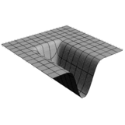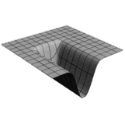Casimir effects ⎯ in the real world
Quantum fluctuations in the electromagnetic field give rise to Casimir forces between two bulk materials (and the related Casimir-Polder force, which occurs between an atom and a surface). In both cases, the magnitude and sign of the force depend on the electromagnetic properties of the materials. However, one has to be careful how the effects of finite conductivity are introduced into existing theory.
Two papers appearing in Physical Review Letters tackle this problem for the Casimir and Casimir-Polder forces. Lev Pitaevskii, affiliated with both the University of Trento in Italy and the Kapitza Institute in Moscow, calculates the Casimir-Polder force between an atom and a dielectric surface for quasistatic electric fields. In particular, his calculations extend between the two limits where the surface is a good metal and a good insulator. Diego Dalvit of Los Alamos National Laboratory and Steve Lamoreaux of Yale University explore similar limits for both the Casimir and Casimir-Polder forces, but include the frequency dependence of the electric fields.
Both papers elegantly express the results in terms of measurable materials properties. As cleverly designed experiments are exploring the ways in which temperature, geometry, and charge fluctuations affect Casimir forces, these calculations will certainly be tested. – Jessica Thomas





